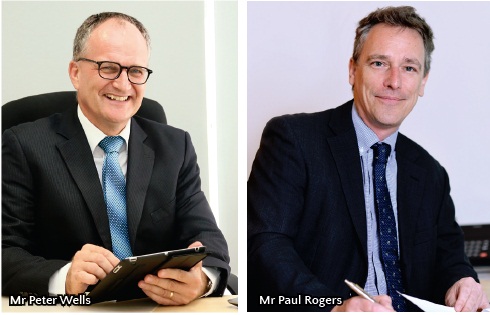We talked with the principals of both Taylor’s International School (TIS) campuses –one located in Kuala Lumpur, the other in Puchong – about the unique learning environment of TIS, holistic education, and the expanding role of technology in the classroom. Mr Peter Wells of TIS Kuala Lumpur and Mr Paul Rogers of TIS Puchong share their responses with us here.
What is special about the TIS learning environment and how do you think this environment contributes to students reaching their full potential?
Peter Wells: I believe that the learning environment must be open and inclusive, which is what we have at TIS. The classrooms are bright and display student work, and are stimulating to the eye. This environment allows students to take risks with their learning and to develop. Students need to be able to ask questions and to be enthused by answers. Students need to know that they will not be penalized for trying, and so we work to have a supportive environment which promotes learning.
Paul Rogers: TIS Puchong is a purpose-built learning environment conducive to the very best learning possible for the children under our care. Classes and other learning areas are purposefully made as stimulating as possible by our teaching staff. The learning environment is also about the culture, ethos and attitudes of all who work at the school and we therefore promote a positive, risk-taking setting for learning where our students’ own learning styles are taken into consideration, as well as the most recent teaching pedagogy.
Talk about your respective campuses. How are you using technology and new facilities to challenge students and increase their passion for learning?
PW: At TISKL, we’ve been using technology for a long time, in fact even before we were an international school. In 2011, we introduced interactive whiteboards to all the classrooms, and these are used to support learning throughout the school. Over the last few years, we have empowered our teachers by giving them laptops, and also provided an increasing number of shared iPads and laptops for students. In the classroom, students are increasingly using Google apps for education to work on individual and collaborative projects, and also stand-alone software like Education City and My Maths.
PR: Information Communication Technology is a core part of our curriculum and the use of computers and interactive whiteboards feature in many parts of the syllabus , not only in specific ICT lesson times but in challenging and supporting children in other curricula areas as well. Passion in education is a crucial part of education and apart from naturally employing those passionate teachers, we strive to enable the best learning to take place for all by using the right subject resources in classrooms/specialist rooms.
How are TIS student outcomes evaluated? How do you look at the whole student rather than just the academic results?
PW: Academic results are important, but we cannot underestimate the importance of soft skills. Students at the school are encouraged to present in front of their peers, developing confidence in the process. All of our events are hosted by students, and many are organised by students. The environment that comes from developing these soft skills means that we really are “educating the youth of the world to take their productive place as leaders in a global community.”
PR: Assessment – the evaluation of progress and attainment in students –is very important. All good teachers assess on an ongoing basis; by asking questions, looking at completed work, testing on a weekly basis , allowing the children to present to others ,and so on. Formal testing and exams are undertaken during the year and the results are then reported and explained to children and parents, as well as used to set targets for the children to strive towards achieving in the future .
What are some examples of TIS teaching methods that take advantage of the educational facilities and cutting-edge technologies at each campus?
PW: There are so many in use, from the simple questioning that encourages critical thinking, and presentation and project work throughout the school, to the breakout areas in primary,giving space for the project work that is part of IPC, to mobile laptops and iPads, which allow research in any location, using Edmodo for feedback between teachers and students, to Socrative which allows students to express views about topics that are being taught. These are just a small number of examples of what you can see at TISKL.
PR: Examples we employ to take advantage of our facilities include teaching in other stimulating environments of the school campus (apart from the classrooms) such as the library, breakout areas, or the outside playgrounds. Naturally the use of computers and iPads enables this more easily as well as having a school which is networked and has Wi-Fi throughout. In terms of the methods of teaching, we use many varied methods to suit specific subject areas, year groups, and the skills of the children we teach. From ensuring our teaching is differentiated, to taking stock of children’s own learning styles, to peer teaching where older children teach younger children – we try to make sure that these things, among others, are happening as a usual practice of teaching here at TIS Puchong.
Read more:
- 3 Things You Might Not Know about Nexus International School
- Meet the Headmaster of Penang’s Uplands International School
- Meet Sri KDU’s Dr Richard Levett
Source: The Expat magazine September 2015
"ExpatGo welcomes and encourages comments, input, and divergent opinions. However, we kindly request that you use suitable language in your comments, and refrain from any sort of personal attack, hate speech, or disparaging rhetoric. Comments not in line with this are subject to removal from the site. "



















